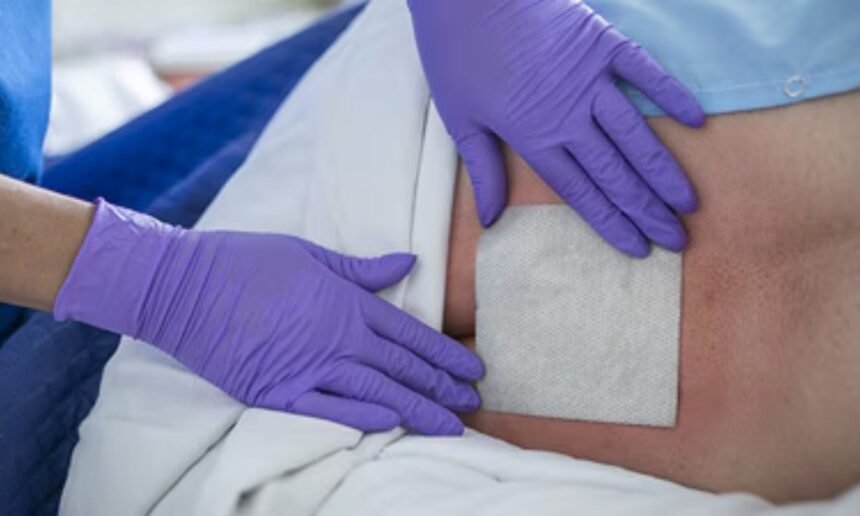Pressure ulcers, also known as bedsores or pressure sores, are injuries to the skin and underlying tissue caused by prolonged pressure. These wounds typically develop in individuals who have limited mobility, such as bedridden patients or those using wheelchairs for extended periods. Without proper care, pressure ulcers (bedsores) can worsen, leading to infections and serious complications.
Proper wound care treatments are essential to promote healing, prevent infection, and minimize complications. This article explores the best treatments for pressure ulcers (bedsores), from basic wound care strategies to advanced medical therapies.
The right wound care is critical in managing pressure ulcers. Explore the stages of pressure ulcers and how to detect them early to manage them effectively.
Basic Wound Care for Pressure Ulcers
Basic wound care plays a crucial role in preventing and managing pressure ulcers. The following steps are essential in treating these wounds effectively:
1. Cleaning the Wound
- Keeping the ulcer clean reduces the risk of infection and promotes faster healing.
- Wounds should be cleansed with a sterile saline solution or mild antiseptic.
- Avoid using harsh chemicals like hydrogen peroxide, which may damage healthy tissue.
2. Dressing the Ulcer
- The right dressing can protect the wound and accelerate healing.
- Options include foam dressings, hydrocolloid dressings, and antimicrobial bandages.
- Specialized dressings help keep the wound moist while preventing bacterial infections.
3. Pressure Relief
- Reducing pressure on the affected area is vital for healing.
- Patients should be repositioned regularly to alleviate pressure points.
- Using pressure-relieving cushions, air mattresses, and specialized beds can help distribute weight evenly.
4. Moisture Control
- Excess moisture can weaken the skin and increase the risk of further breakdown.
- Barrier creams, absorbent dressings, and incontinence care can help manage moisture levels.
5. Pain Management
- Pressure ulcers can cause significant pain and discomfort.
- Over-the-counter pain relievers or prescribed medications may be necessary.
- Topical analgesics and anti-inflammatory medications can also provide relief.
Advanced Therapies for Pressure Ulcers
When basic wound care treatments are not sufficient, advanced therapies can accelerate healing and reduce complications.
1. Debridement
- The removal of dead or infected tissue enhances healing.
- Methods include:
- Surgical debridement (using scalpels or surgical tools)
- Enzymatic debridement (applying enzymes to break down dead tissue)
- Mechanical debridement (using special dressings or irrigation techniques)
- Autolytic debridement (using the body’s natural healing processes)
2. Negative Pressure Wound Therapy (NPWT)
- Also known as vacuum-assisted closure (VAC) therapy, NPWT involves placing a vacuum dressing over the wound.
- The device creates negative pressure, which increases blood flow and removes excess fluids.
- Studies have shown that NPWT can significantly speed up wound healing.
3. Hyperbaric Oxygen Therapy (HBOT)
- This treatment involves breathing pure oxygen in a pressurized chamber.
- HBOT enhances oxygen delivery to tissues, which can accelerate healing and reduce infection risks.
- It is particularly useful for non-healing chronic wounds.
4. Growth Factors and Biologic Treatments
- Growth factor therapies stimulate tissue regeneration.
- Bioengineered skin substitutes and platelet-rich plasma treatments can aid in faster wound closure.
- Research is ongoing to develop more effective biologic treatments for chronic wounds.
5. Skin Grafts and Flap Surgery
- In severe cases, surgical intervention may be required.
- Skin grafts involve transplanting healthy skin from another part of the body to cover the ulcer.
- Flap surgery involves repositioning adjacent healthy tissue to cover and protect the wound.
- These procedures are typically considered for large or deep ulcers that do not respond to other treatments.
Preventing Pressure Ulcers
Preventing pressure ulcers is crucial to reducing the risk of chronic wounds. Key preventive strategies include:
1. Regular Repositioning
- Patients should change positions frequently to relieve pressure on vulnerable areas.
- Bedridden individuals should be turned every 2 hours, while wheelchair users should shift positions every 15-30 minutes.
2. Proper Nutrition
- A well-balanced diet plays a vital role in skin health and wound healing.
- Protein, vitamins (especially vitamin C and zinc), and adequate hydration support tissue repair and immune function.
3. Maintaining Skin Integrity
- Skin should be kept clean, dry, and moisturized to prevent breakdown.
- Using gentle cleansers and barrier creams can help maintain a healthy skin barrier.
4. Using Supportive Surfaces
- Special pressure-relieving mattresses, overlays, and cushions can reduce prolonged pressure on certain areas.
- Patients at high risk should have customized support surfaces recommended by healthcare professionals.
5. Managing Underlying Conditions
- Chronic illnesses like diabetes, vascular diseases, and malnutrition can increase the risk of pressure ulcers.
- Managing these conditions with proper medication, lifestyle changes, and medical interventions can help prevent complications.
Preventing pressure ulcers is vital in reducing patient discomfort. Check out these Essential bedsore prevention strategies for bedridden patients .
Conclusion
By combining effective wound care techniques with advanced medical therapies, healthcare providers can significantly improve outcomes for patients suffering from pressure ulcers (bedsores). Timely intervention and preventive measures ensure faster recovery and a better quality of life for affected individuals.


Leave a Reply